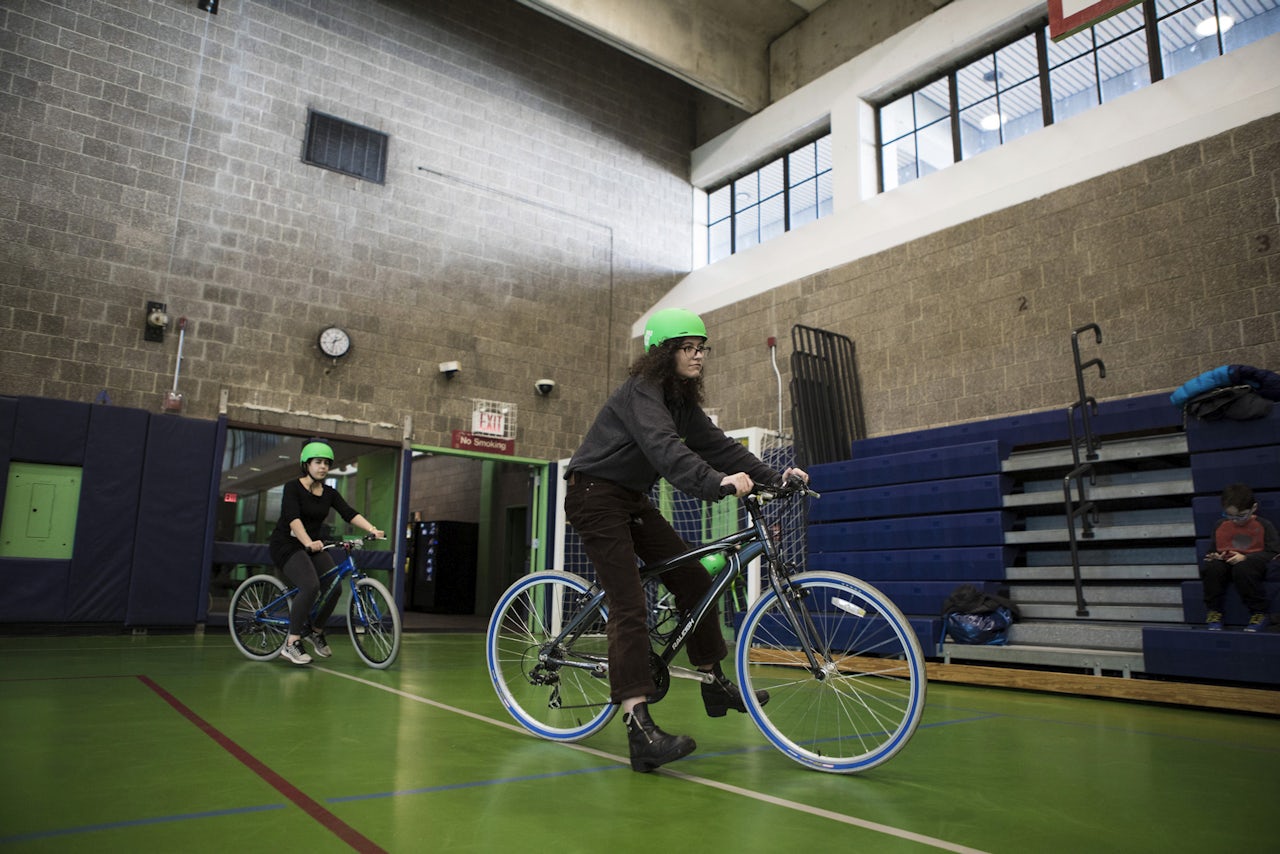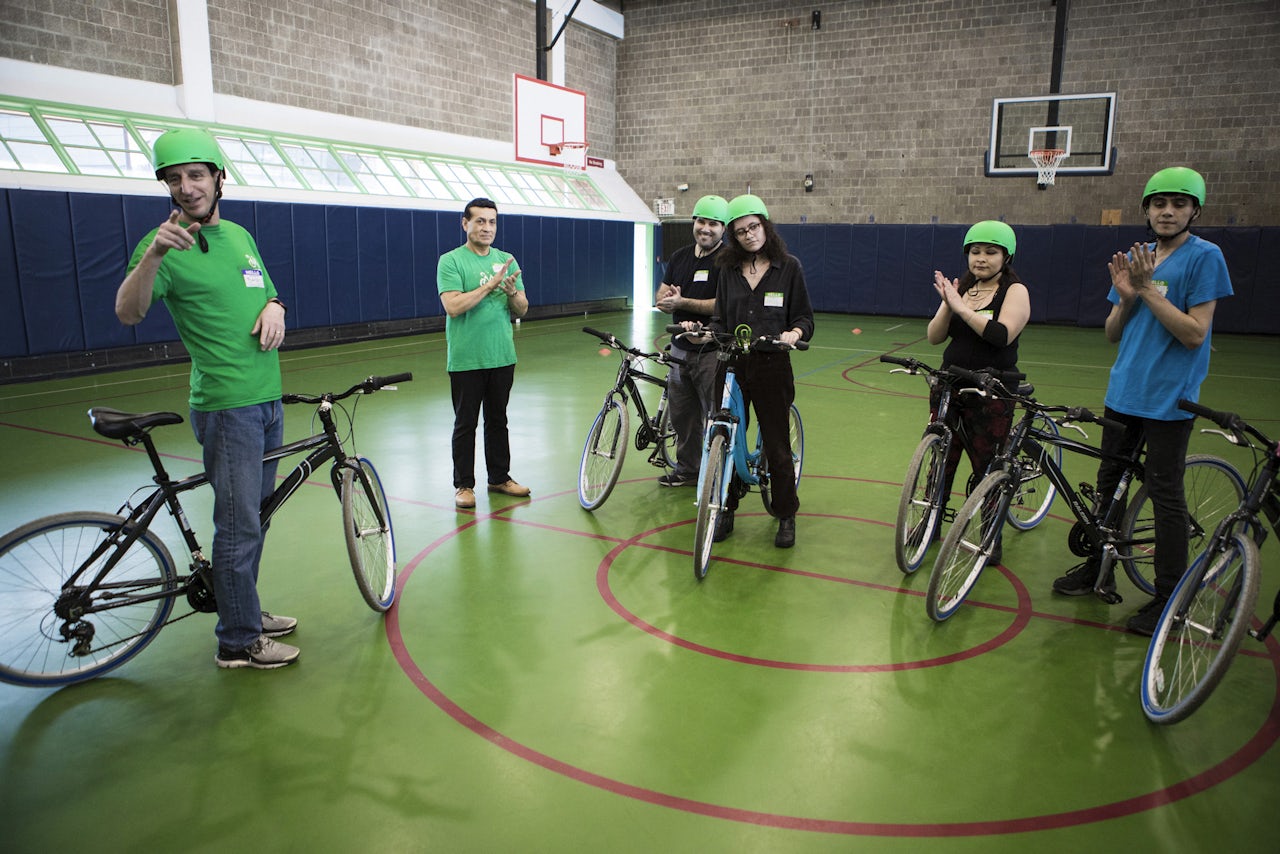First, let me assure you that this is not a victor’s tale. This story contains no triumphs.
Humankind has always felt the urge to propel itself on the wheel. This has taken shape through various wheeled contraptions, from the unicycle to the multi-modal Duck Boat. The vessels that have managed to make the jump from novelty to societal necessity are, of course, the bicycle and the automobile. I’m incapable of piloting either one.
There’s no particular reason I don’t know how to ride a bike. I just don’t know how to do a lot of very basic things. My parents, kind and caring as they are, say that they never attempted to teach me how to ride a bicycle because I “never asked.” For this same reason, I didn’t eat a strawberry until I was an adult. Rites of passage have always eluded my family. It is said that children learn without fear, but I’ve always had a coward’s heart.
When asked why I decided to finally learn how to ride a bike, I told people that the urge just came over me. This wasn’t entirely true. What got me to take the plunge was the temptation of an extended vacation on San Marcos Island, Florida, hometown of my friend Christina, where we would drop out of life for a month, live with her parents, have short-term kombucha bottling jobs, and bike everywhere. Alas, the trip never happened, but the prospect of becoming a cyclist remained. The other catalyst, even more secretly, was the memory of a previous drop-out-of-life trip to a desolate Canadian beach town with my ex-boyfriend. While he ignored me and programmed all day, I fantasized about biking over the Peace Bridge to Buffalo. If only I knew how to ride.
We all have our reasons for going to adult bike class. I signed up for one called “Learn To Ride — Adults” through Bike NYC, a nonprofit that teaches bike skills to children and adults in New York City. For adults too self-conscious to learn in groups, there are enterprising individuals who offer private bike lessons but, charitably, this class doesn’t cost anything. Robin, the communications director for Bike NYC, told me that most people learn how to ride in one class, which lasts two hours, although a few have needed to come back for another class or two. Barry, the class instructor, told me about a middle-aged woman who seemed particularly enthusiastic about the class, to the point where he was a little freaked out. It turned out that she was from a country where women were forbidden from riding bikes. I had no such excuse.
We all have our reasons for going to adult bike class.
It was a beautiful, uncharacteristically warm February day on Roosevelt Island; an idyllic setting for such a shameful activity. The class took place in a gym, where I surveyed my 16 fellow adult losers and a handful of instructors. Most were older than me, which served as a comfort. Very quickly, I saw that everyone else was dressed in exercise gear, or at least short-sleeved shirts. In a startling display of idiocy, I was wearing a long-sleeved wool button down shirt and corduroy pants. Why did I do this? Well, I don’t know. It’s just what I wear every day. It never occurred to me, not even for a second, that riding a bicycle would make me break a sweat. I now know that this was my first mistake.
Barry assumed the least of our knowledge and walked us through the parts of a bicycle as you would explain them to an alien or a child. This turned out to be useful as he non-judgmentally showed me how to put on a helmet, because I did not know which side was the front. He also taught us about the kickstand, which I tried to kick in the wrong direction. When it was time to adjust our seats, I was too weak to pull the lever, so Barry came to the rescue. We used training bicycles without pedals, similar to the early-1800s Dandy Horse on which opium dealers and wet nurses rode through the streets of New Amsterdam. In lieu of traditional training wheels or tricycles, so-called “balance bikes” have gained popularity as the preferred learn-to-ride method. Prefab balance bikes mostly come in children’s sizes, so we used actual bikes with the pedals removed.
When I sat on the bike I felt an immediate, unearned confidence. Barry told us to sit on our bikes and walk, like normal walking, one foot after another, except you’re in searing pain and you’re steering a large hunk of metal. For the next hour of the class I kept at it faithfully, walking myself in a circle around the Roosevelt Island Sportspark. When I felt particularly confident in my short-term balancing abilities, I would pick up my feet and coast for three or four seconds. When this thrill became tedious, I would try really hard to make eye contact with an instructor (particularly Yawa, the most intense instructor, whom I was desperate to impress) so they could take note of my skill and award me my pedals. At this point, I was feeling very overdue for pedals. Every time an instructor became aware of me, any gained ability would disappear and I would precariously teeter on the bike for half a second.
Yawa’s harshness came from experience. She, too, was once an adult loser, and came to a Bike NYC class to learn. Like me, she was taught by Barry, and she needed more than one class to reach bike-riding success. This was reassuring to me. Ever since she earned her pedals, she has been one of the most active volunteers at Bike NYC. “Others gave their time and effort for me to learn, so I try to pay it forward,” she said. “When I learned to ride, the joy that I got from it, and now anytime the weather is good I just hop on a bike and let the fresh air, the breeze flow through my hair. So when I come and see other people, the light on their face when they start to pedal, it gives me a joy to see that they are also accomplishing what I have once went through.”
I thought I was doing well in adult bike-riding class, or at least as well as my compatriots. But then, as I looped my way around, Yawa told me that I needed to SIT BACK ALL THE WAY on the seat. And then I started to black out.
I almost don’t want to write about this part, because I think it’s one of the most embarrassing things to ever happen to me. I’ve never fainted before, and I didn’t want 45 minutes of adult bike riding-class to be the physical activity that proves too much for my feeble body. But it did. Somehow, my will to live overpowered my shame, and I let Yawa escort my sweat-drenched body to the bleachers. I felt better as soon as I sat down. Yawa returned with a cup of water and a Roosevelt Island security officer, who I assume was there to make sure I wasn’t going to die on premises. I drank my water and told Yawa I felt totally ready to go back and ride, but she did not believe me and made me sit down for a while longer. This was probably wise.
Riding a bike hurts. Did you know this? Did everyone else know this? The pain begins in the butt area almost immediately and ends three days later. A few hours after class ended I felt like I had been in a car accident. Sitting on a hard surface was out of the question, sitting down on a soft surface was even pushing it. There was an enormous bruise on the side of my right calf. It was the kind that would be caused by pedals slamming against your leg, except… I hadn’t even gotten to the level at which one uses pedals. I had a phantom pedal bruise. I began to think maybe my injuries were psychosomatic; my mind completely rejecting the idea that I would ever learn how to ride a bike.
By the end of the class, I was one of two people who hadn’t been bestowed the privilege of pedals. Some people with pedals hadn’t made much progress with them, but they had still come farther in bike riding than I had. In a way, I felt relieved. It’s easy to cling to your shortcomings as substitute for a personality. My inability to ride a bike has been my main icebreaker for a long time, and I’m not ready to change it.





